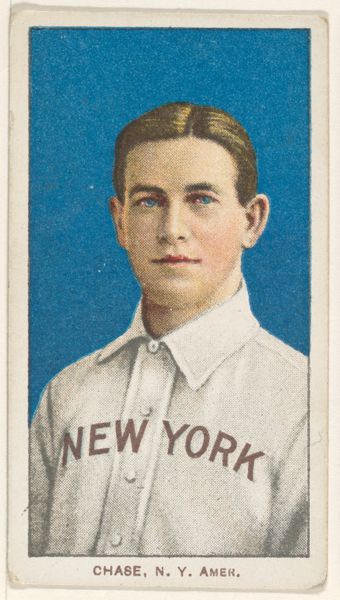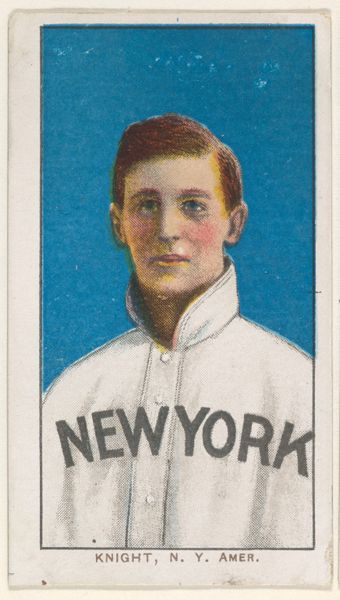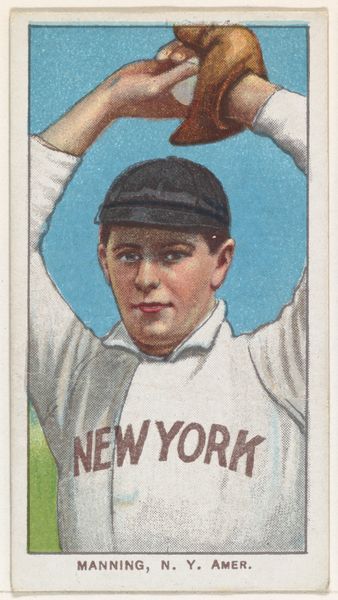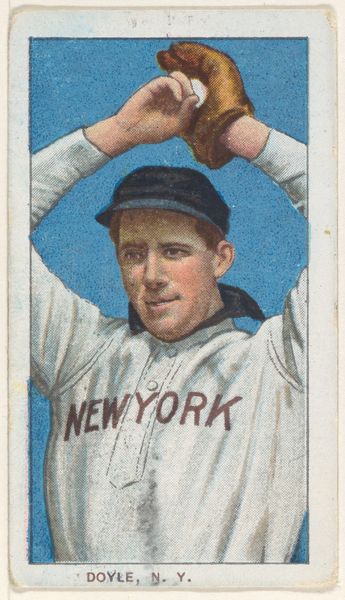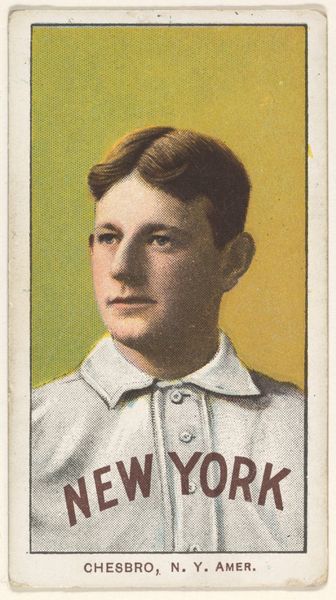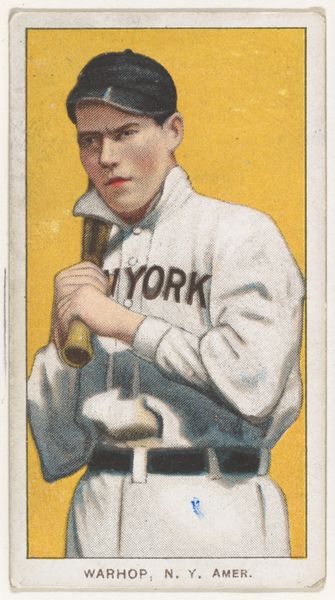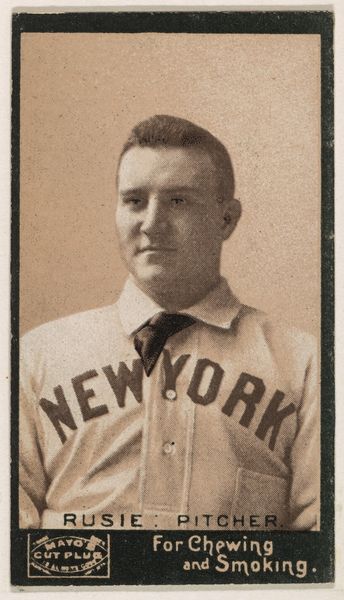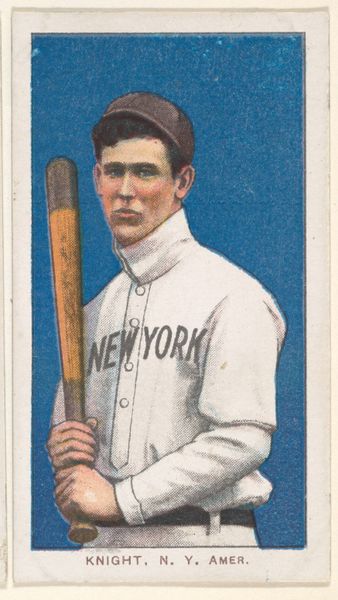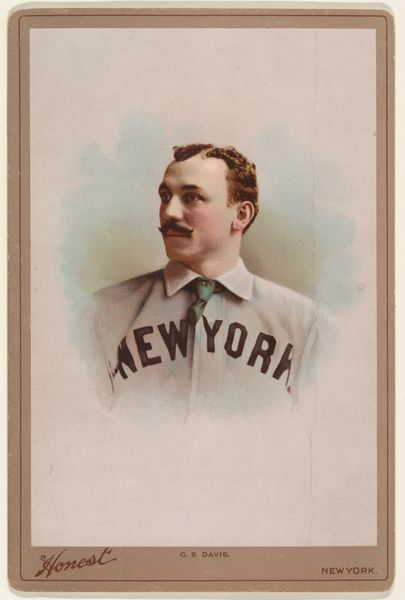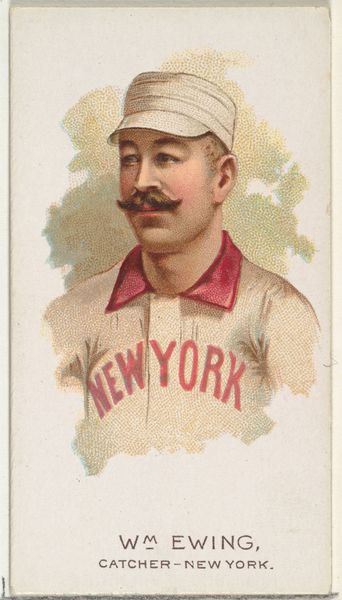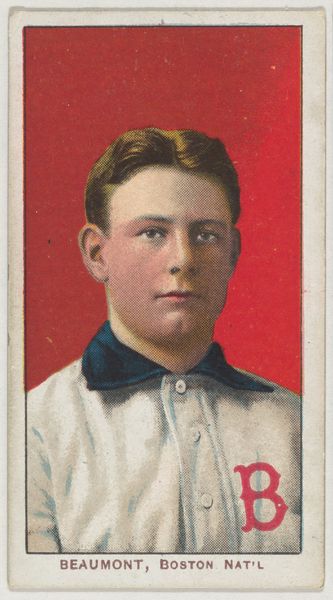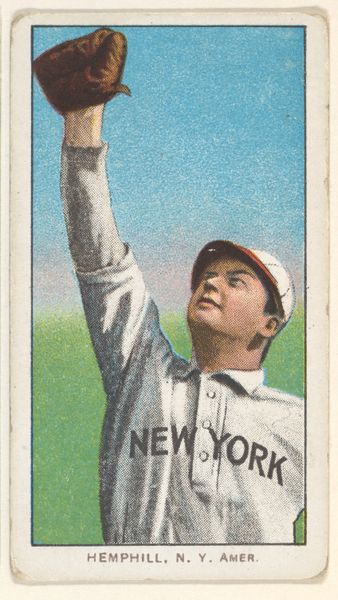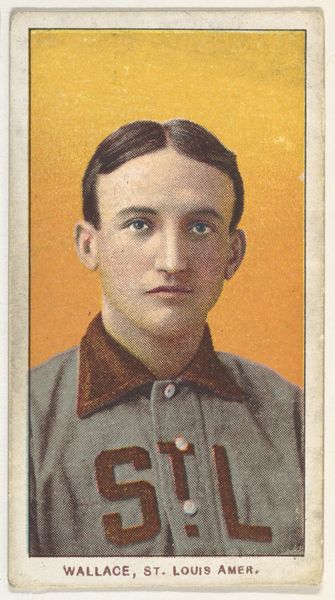
Elberfeld, New York, American League, from the White Border series (T206) for the American Tobacco Company 1909 - 1911
0:00
0:00
Dimensions: Sheet: 2 5/8 x 1 7/16 in. (6.7 x 3.7 cm)
Copyright: Public Domain
Editor: This is a baseball card of Norman "Deacon" Elberfeld, printed by the American Tobacco Company sometime between 1909 and 1911. I’m immediately struck by its simplicity. It's almost iconic in its straightforwardness, especially with the flat red background. What do you see in this piece? Curator: It’s fascinating how seemingly simple images like this carry so much cultural weight. Consider the baseball card itself, a tiny rectangle invested with enormous emotional value. What does this image of Elberfeld, in his New York jersey, tell us about early 20th century ideas of celebrity, sport, and even national identity? Editor: Well, it's a very direct image, it’s not abstract, like you see with much of the modern art we've been discussing in class. Do you think people at the time would’ve analyzed it in similar ways to today? Curator: Absolutely, in some ways! Early photographic images had this aura of authenticity. The picture promises a kind of truth. It also touches on our shared mythology: sports heroes represent admirable values, physical prowess, and even patriotism. That block of red also screams, doesn’t it? Is it energy? Power? Or just the easiest colour to print? It would have drawn the eye in a shop display of tobacco. Editor: It makes sense when you mention advertising. Tobacco and baseball. Both marketed to everyone, practically a national symbol in their own right. Now that I think of it, how were baseball cards even distributed at this time? Curator: They came inside cigarette packs, so were immediately collectible items! What a memory capsule of not just sport, but capitalism as well! The act of collecting itself is a potent ritual. Editor: This card isn't just about Elberfeld, then; it's like a time capsule holding so many ideas together. Thanks! Curator: Indeed! By studying such images closely, we come to a better understanding of shared desires and aspirations of an entire culture.
Comments
No comments
Be the first to comment and join the conversation on the ultimate creative platform.
